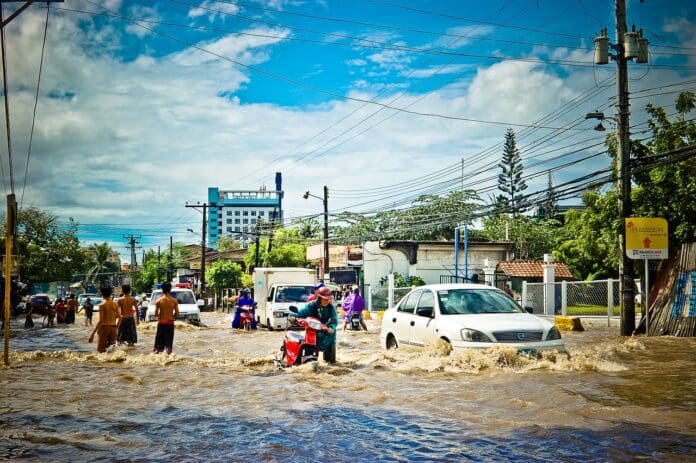This post is also available in:
 עברית (Hebrew)
עברית (Hebrew)
Rice University engineers have developed an advanced AI-powered system to improve real-time flood detection on roads, addressing a critical need for effective flood-reporting tools. The system, named OpenSafe Fusion, enhances situational awareness by integrating various existing data sources to provide up-to-date information on road conditions during urban flooding events, which are becoming increasingly frequent.
Flood-related incidents are a significant cause of fatalities in the US, and the current tools used to monitor flooding—such as traffic cameras, water-level sensors, and social media—are often not designed specifically for road conditions and do not work together seamlessly. A network of dedicated sensors could improve flood awareness, but deploying them at scale is costly. To overcome these limitations, Rice University engineers have introduced OpenSafe Fusion, an automated data fusion framework aimed at providing a comprehensive solution without requiring substantial new infrastructure.
OpenSafe Fusion, which stands for Open Source Situational Awareness Framework for Mobility using Data Fusion, uses data from various sources to monitor rapidly changing road conditions during floods. This includes traffic alerts, cameras, and speed data, combined with machine learning and data fusion techniques to predict road flooding. The framework is designed to operate using existing public data sources and reporting mechanisms, significantly reducing the need for new sensors.
According to Interesting Engineering, the development of OpenSafe Fusion involved analyzing data from nine sources in Houston, leading to the creation of this innovative framework. The research, detailed in the journal Reliability Engineering & System Safety, shows that while direct observations of flooded roads are limited, urban areas are rich in indirect data sources that can be leveraged for flood monitoring.
The effectiveness of such a system was highlighted during Hurricane Harvey in 2017 when many people, including emergency responders, had to manually interpret various data sources to assess road conditions due to the lack of reliable real-time information. By simulating historical flooding data from Harvey, the researchers tested the OpenSafe Fusion framework, covering approximately 62,000 roads in the Houston area and successfully observing about 37,000 road links, representing a 60% coverage of the network.
OpenSafe Fusion also integrates various other data sources, including water-level sensors, citizen reports, crowdsourced information, social media, flood models, as well as human supervision to ensure responsible AI use. This component emphasizes the importance of human oversight in the AI system to prevent potential hazards that could arise from incorrect predictions.
The researchers plan to conduct extensive testing and validation of the system to assess its effectiveness across different communities, especially considering the increasing frequency and intensity of flood events due to climate change.


























